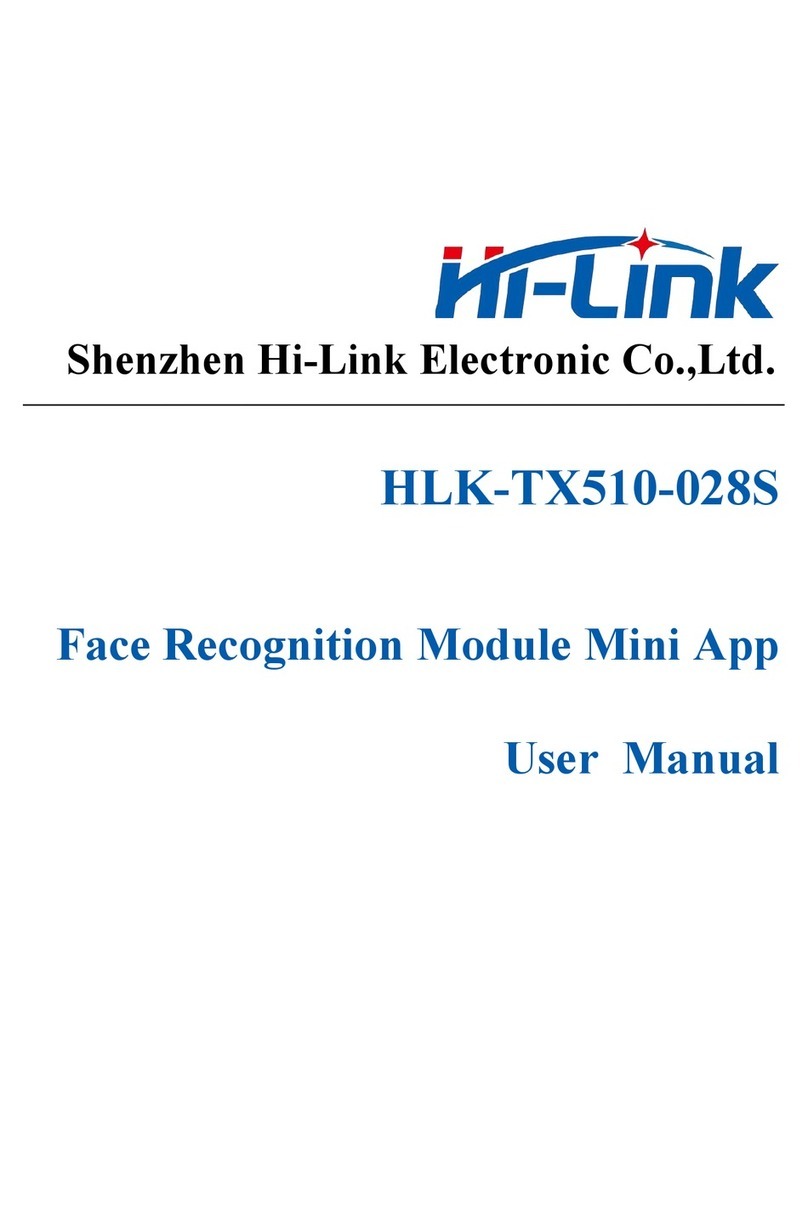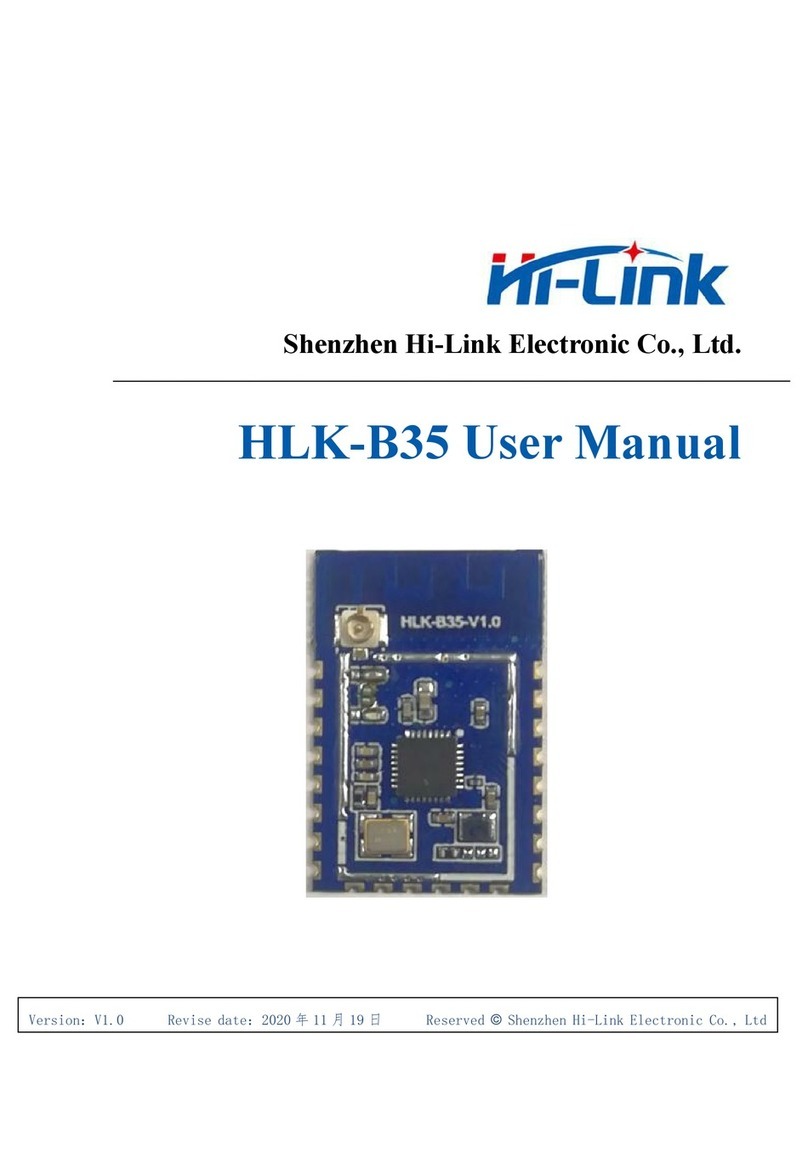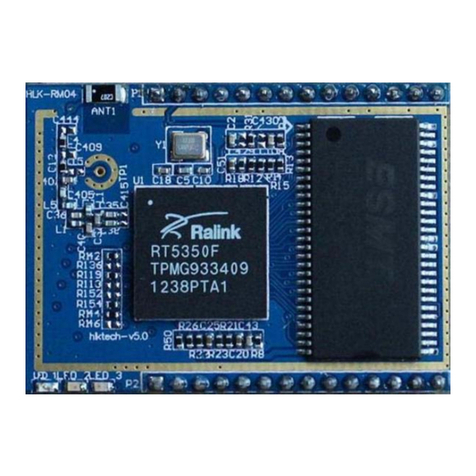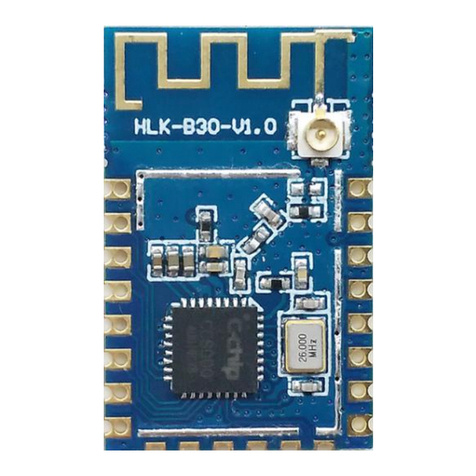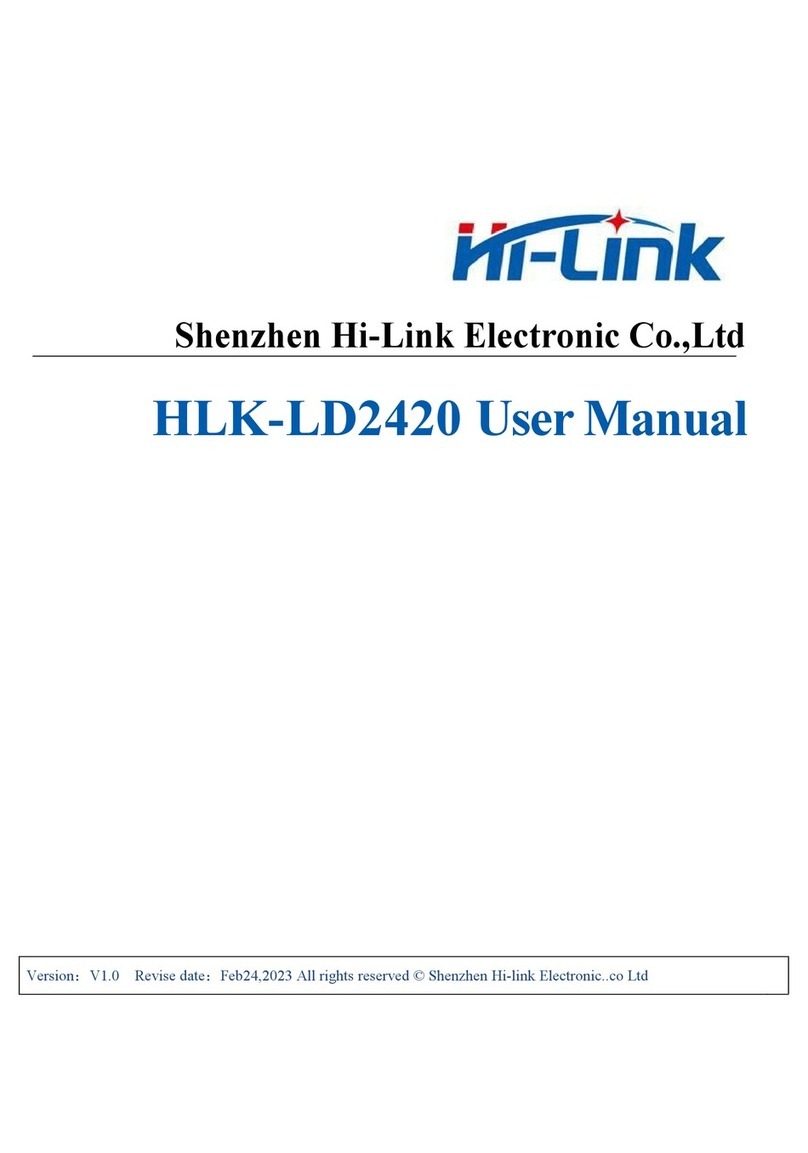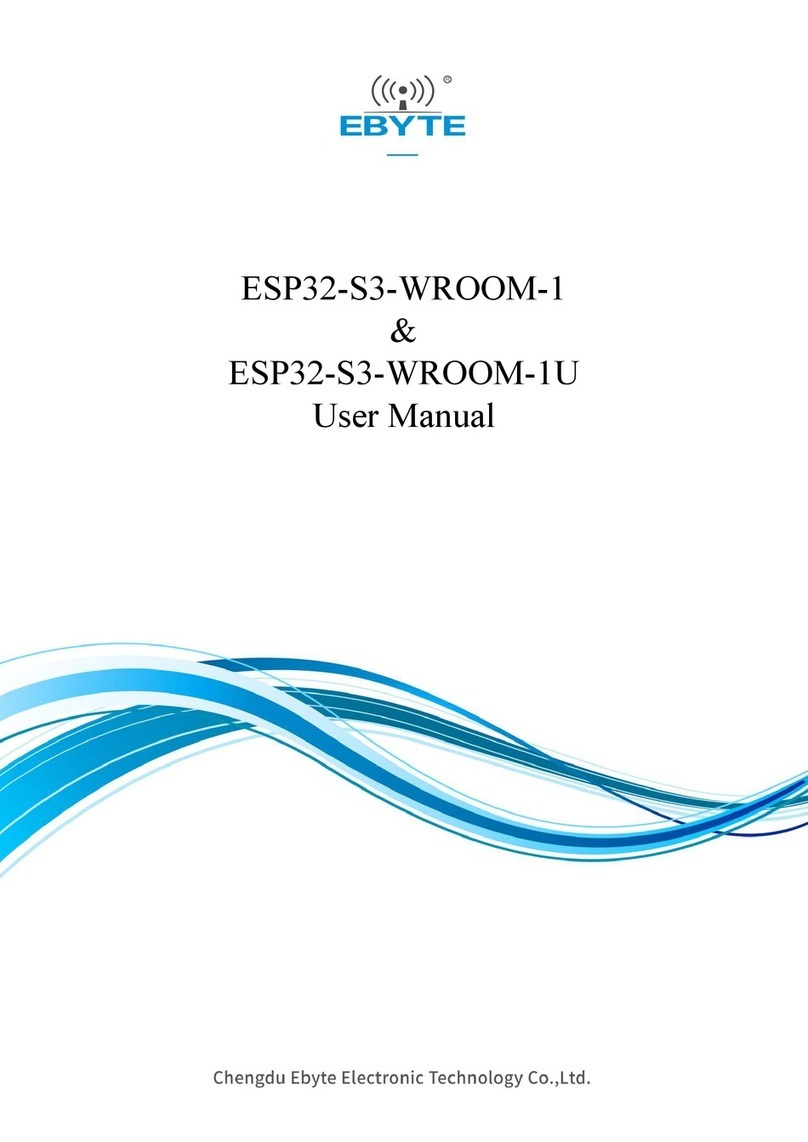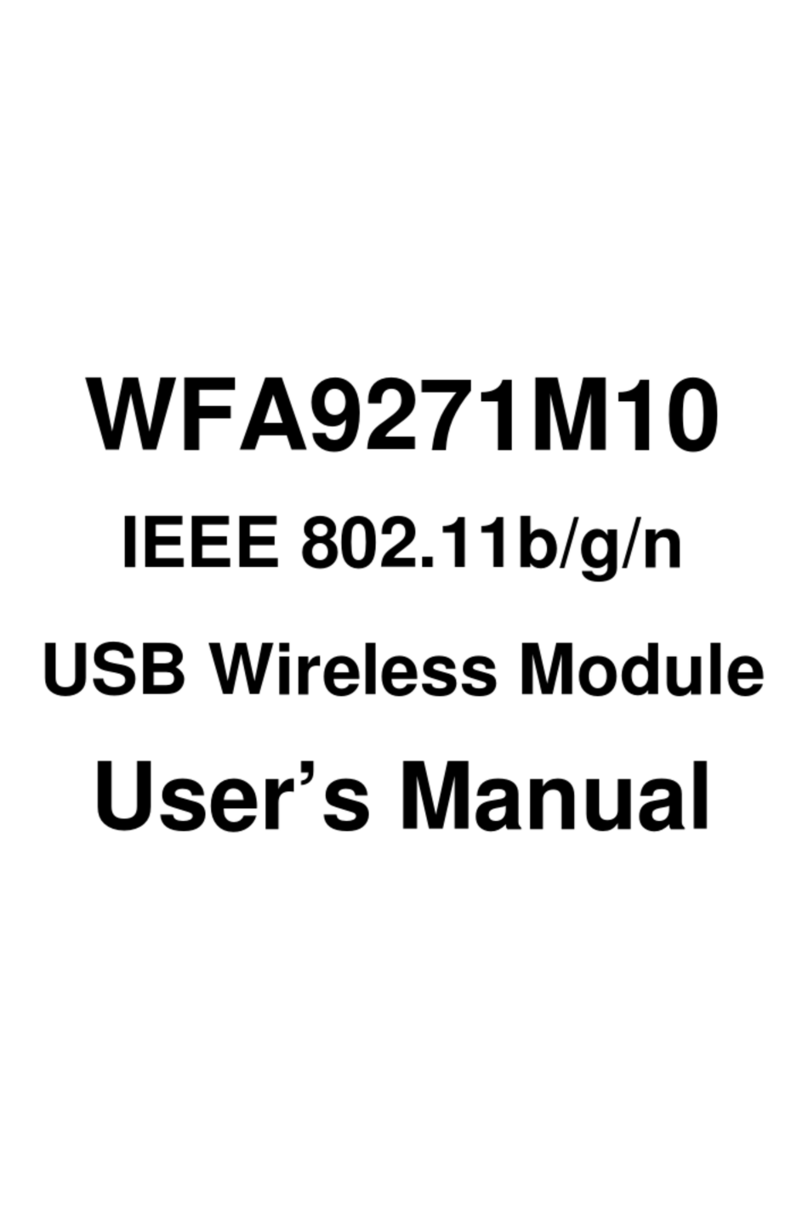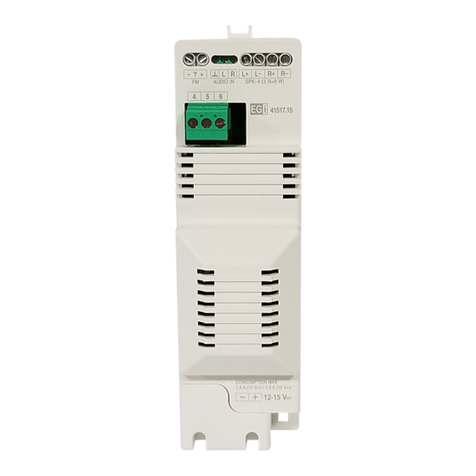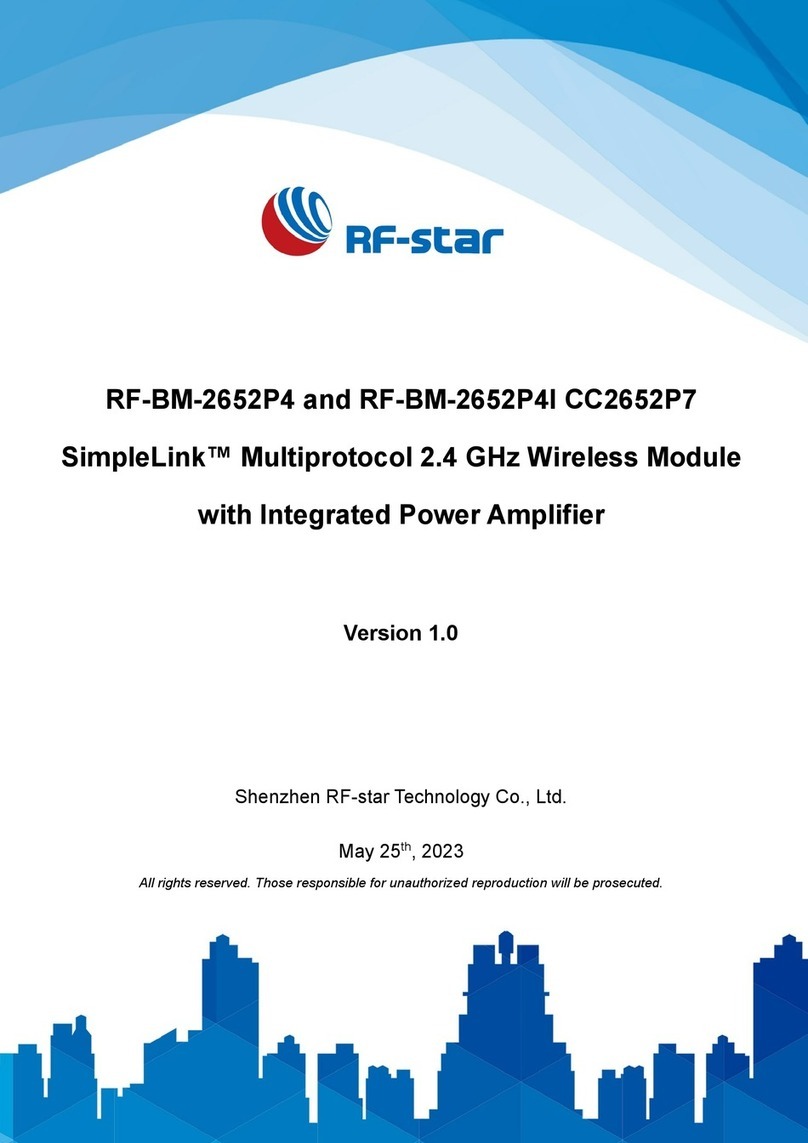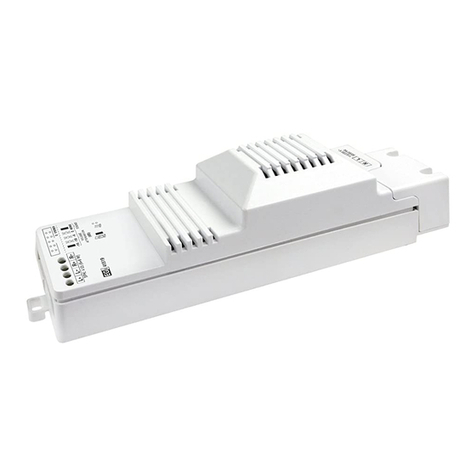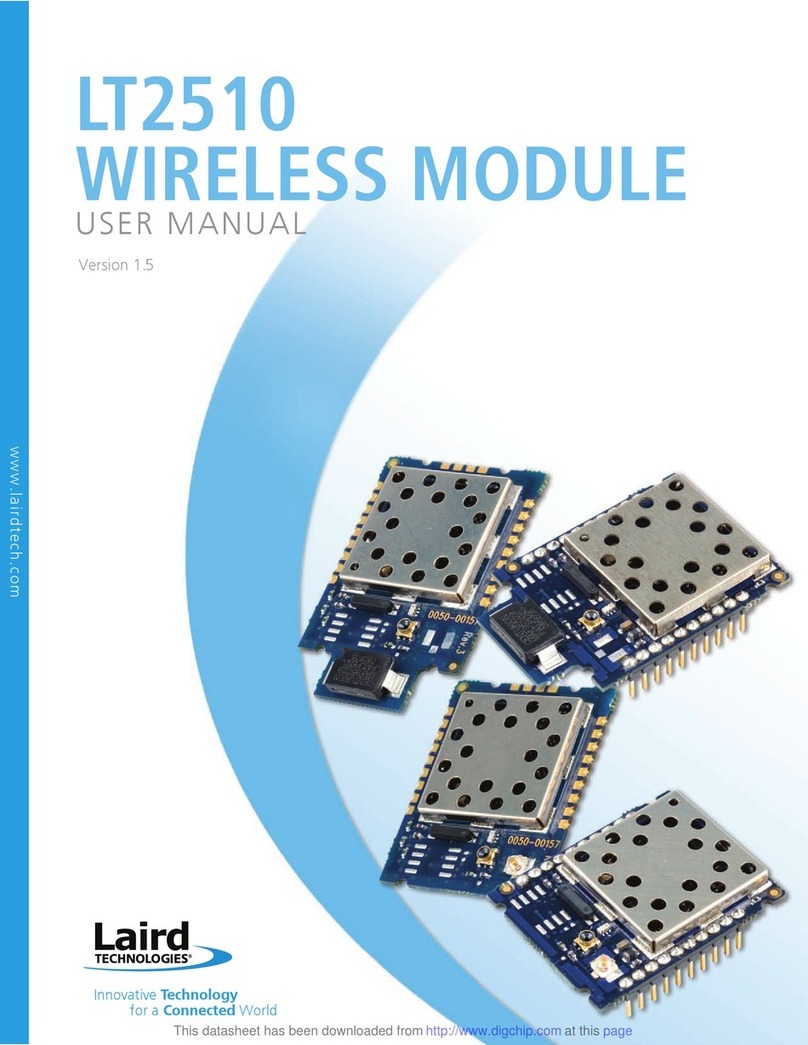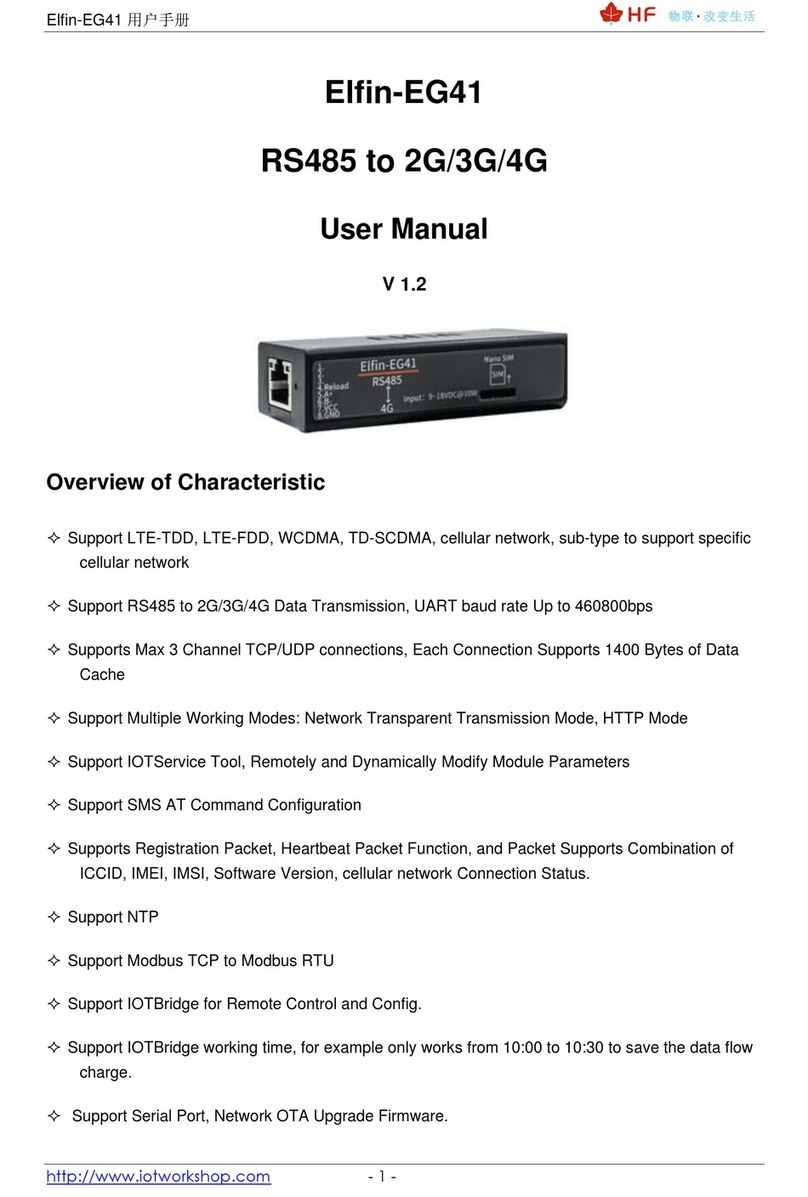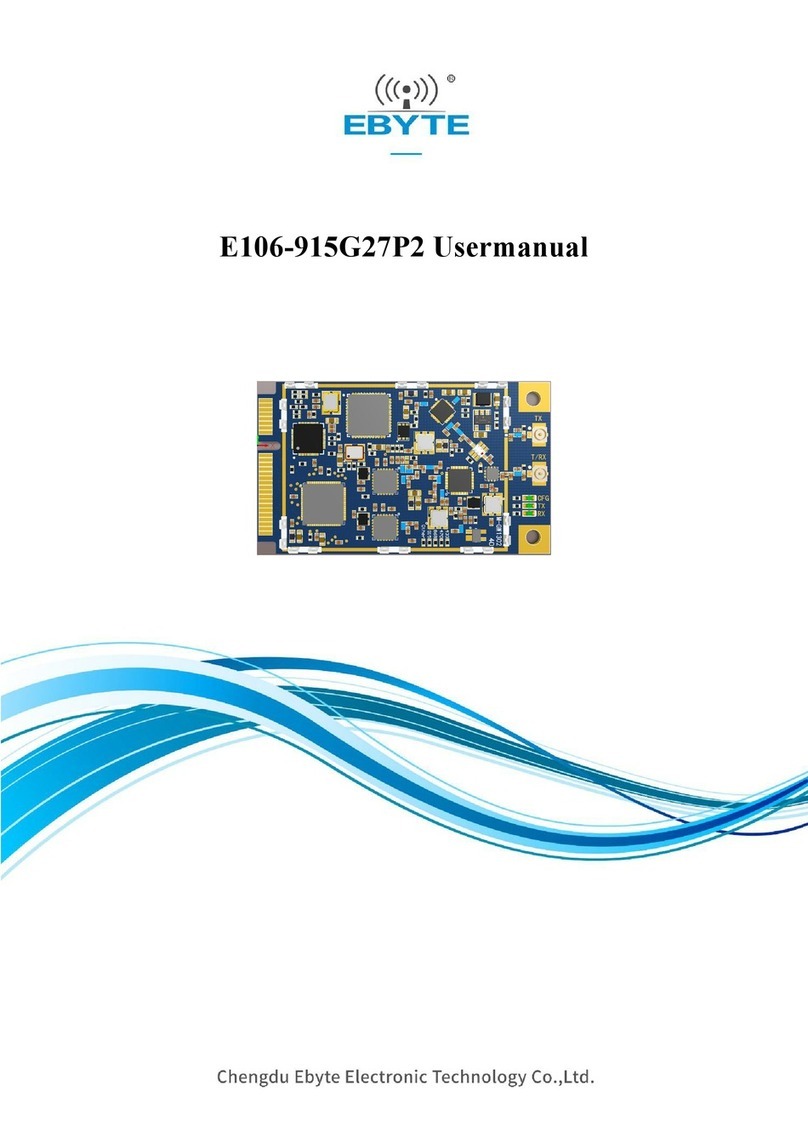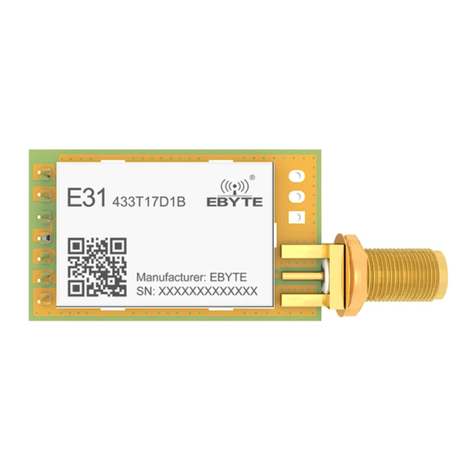Hi-Link HLK-RM60 User manual

Shenzhen Hi-Link Electronic CO.,Ltd
HLK-RM60 User Manual
Version:V1.0
Revised Date:20210508
Copyright © Shenzhen Hi-Link Electronics Co., Ltd.

Contents
1. PRODUCT INTRODUCTION.................................................................................................................................-1 -
1.1.OVERVIEW........................................................................................................................................................-1-
1.2.PRODUCTFEATURES.....................................................................................................................................- 1 -
2. DIAGRAM..................................................................................................................................................................-2 -
2.1.SPECIFICATION...............................................................................................................................................-3-
2.2.NUMBER OFINTERFACES............................................................................................................................- 3 -
2.3.TECHNICALSPECIFICATIONS....................................................................................................................-4-
2.4.APPLICATION FIELD......................................................................................................................................-5 -
3.ELECTRICALPARAMETERS...............................................................................................................................-5 -
3.1.OPERATINGVOLTAGE...................................................................................................................................-5-
4. PIN INTRODUCTION..............................................................................................................................................- 6-
5. SIZE..........................................................................................................................................................................- 12 -
6. INDICATOR LIGHT DESCRIPTION..................................................................................................................- 13 -
7. PIN FUNCTION DESCRIPTION..........................................................................................................................- 13 -
8.CONFIGURATIONPAGE.....................................................................................................................................-14 -
9. SET WIFI HOTSPOT NAME................................................................................................................................- 15 -

User Manual
- 1 -
1.
ProductIntroduction
Overview
HLK-RM60 is a high-performance embedded WIFI6 module launched by HilinkElectronics.
The module complies with IEEE standard 802.11a/b/g/n/ac/ax. The module integrates a
2.4G/5.8G radio frequency transceiver with a transmission rate. Highcharacteristics.
Product Features
Compatible IEEE 802.11a/b/g/n/ac/ax
Dedicated high performance 32-bit RISC CPU
Support 20/40MHz in 2.4G,Support 20/40/80MHZ in 5G
Support 2.4g/ 5.8 GHz ,Data rate up to 573+1201 Mbps
Support STA/AP
Built-in TCP/IP protocolstack
Support Wireless upgrade(OTA)
3.3V Single power supply

User Manual
- 2 -
Specification
Items Parameter Notes
Model Number HLK-RM60
Main Chipset MT7621
Kernel MIPS1004Kc
Main frequency 880MHz
RAM DDR2 128MB
Flash 16MB
Temperature Ambient temperature: -20℃~+60℃
Humidity Using:10~95%(Non-condensing)
Stock:5~95%(Non-condensing)
Size 90mm×60mm
Number of interfaces
Interface Quantity Default firmwareSupport
WiFi Standard IEEE802.11b/g/n/a/ac/ax Support
Ethernet Interface 5* 100M/1000M (Adaptive) 1*WAN、4*LAN
UART
2
2*UART
SDIO
1
Not Support
SPI
1
Not Support
I2C
1
Not Support
USB3.0
1
Not Support
USB2.0
1
Not Support

User Manual
- 3 -
Technical specifications
Module
Model Number
HLK-RM60
Package In-line
Wireless
parameters
Wireless standard IEEE 802.11a/b/g/n/ac/ax
Frequency Range 2.4G Wi-Fi: 2412-2462MHz ;
5G Wi-Fi: 5150-5250MHz, 5725-5850MHz
Transmit power
802.11b: +18.99dBm
802.11g: +18.65dBm, 802.11a: +16.80dBm
802.11n20: +23.69dBm, 802.11ac20: +19.64dBm
802.11n40: +21.48dBm, 802.11ac40:+20.00dBm
802.11ax20: +19.56dBm , 802.11ax40: +20.29dBm
802.11ac80: +21.31dBm, 802.11ax80: +21.38dBm
Receiving sensitivity
802.11b: -88.4 dBm (@11Mbps,CCK)
802.11g: -75.7dBm (@54Mbps,OFDM)
802.11n: -73.6dBm (@HT20, MCS7)
802.11a: -75.0 dBm(@MCS7)
802.11ac: -75.0 dBm (@MCS9)
802.11ax: -73.0 dBm(@MCS11)
Antenna Type External :4*I-PEX Connector
Hardware
parameters
Hardware interface UART,IIC,PWM,GPIO, SPI
Network port 5*Full Gigabit Ethernetport
USB 1*USB3.0+1*USB2.0
Work Voltage 3.3V
GPIO Drive capability Max:12ma
Work Current Keep sending=>average:~800mA,Max:1000mA
In normal mode=>average:~750mA,Max:800mA
Temperature Operating temperature : -20℃~ +60℃
Storage temperature: ‐40℃~ +85℃
Size 90*60mm
Software
parameters
Wireless networktype STA/AP
Firmware Upgrade Web Upgrade
Networkprotocol IPv4, TCP/UDP
Userconfiguration Web configuration
Table 1. Technicalspecifications

User Manual
- 4 -
Application field
Smart home;
Instrumentation;
Wi-Fi Remote monitoring/control ;
Toy field;
Color LED control;
Intelligent integrated management of fire protection andsecurity;
Smart card terminals, wireless POS machines, handheld devices,etc.
2.
Electrical parameters
Working voltage
Parameter
Smallest
Typical Max
Unit
Workingvoltage
3
3.3
3.6
V
I/O Voltage
3
3.3
3.6
V
Peak module current
1000mA
800
mA
Supply current
requirements
≥1500
mA
Power supply ripple
requirements
≤50
mV
Table 2. Module power supply requirements

User Manual
- 5 -
3.
Pin introduction
Figure 2. Module pin sorting

User Manual
- 6 -
Table 3. Module pin sorting
1:3.3VD 2:GND 39:ND_D2 40:ESW_TXVN_D_P1 77:I2C_SDA 78:GND
3:3.3VD 4:GND 41:ND_D1 42:GND 79:NC 80:ESW_TXVP_A_P4
5:3.3VD 6:GND 43:ND_D0 44:ESW_TXVP_A_P2 81:WDT_RST_N 82:ESW_TXVN_A_P4
7:3.3VD 8:ESW_TXVP_A_P0 45:ND_RB_N 46:ESW_TXVN_A_P2 83:ESW_P4_LED 84:ESW_TXVP_B_P4
9:3.3VD 10:ESW_TXVN_A_P0 47:ND_RE_N 48:ESW_TXVP_B_P2 85:ESW_P3_LED 86:ESW_TXVN_B_P4
11:NC 12:ESW_TXVP_B_P0 49:ND_CS_N 50:ESW_TXVN_B_P2 87:ESW_P2_LED 88:ESW_TXVP_C_P4
13:SSUSB_TX_P 14:ESW_TXVN_B_P0 51:ND_WP 52:ESW_TXVP_C_P2 89:ESW_P1_LED 90;ESW_TXVN_C_P4
15:SSUSB_TX_N 16:ESW_TXVP_C_P0 53:ND_CLE 54:ESW_TXVN_C_P2 91:ESW_P0_LED 92:ESW_TXVP_D_P4
17:SSUSB_RX_P 18:ESW_TXVN_C_P0 55:ND_WE_N 56:ESW_TXVP_D_P2 93:3.3VD 94:ESW_TXVN_D_P4
19:SSUSB_RX_N 20:ESW_TXVP_D_P0 57:ND_ALE 58:ESW_TXVN_D_P2 95:3.3VD 96:GND
21:NC 22:ESW_TXVN_D_P0 59:NC 60:GND 97:3.3VD 98:GND
23:USB_D_N 24:GND 61:USB2.0_DM 62:ESW_TXVP_A_P3 99:3.3VD 100:GND
25:USB_D_P 26:ESW_TXVP_A_P1 63:USB2.0_DP 64:ESW_TXVN_A_P3
27:NC 28:ESW_TXVN_A_P1 65:RXD3 66:ESW_TXVP_B_P3
29:ND_D7 30:ESW_TXVP_B_P1 67:TXD3 68:ESW_TXVN_B_P3
31:ND_D6 32:ESW_TXVN_B_P1 69:TXD1 70:ESW_TXVP_C_P3
33:ND_D5 34:ESW_TXVP_C_P1 71:RXD1 72:ESW_TXVN_C_P3
35:ND_D4 36:ESW_TXVN_C_P1 73:D2DB_PORST_N 74:ESW_TXVP_D_P3
37:ND_D3 38:ESW_TXVP_D_P1 75:I2C_SCLK 76:ESW_TXVN_D_P3

User Manual
- 7 -
Power pin description:
No. Name Type Functiondescription Default function
1
3.3VD
P
3.3VInput,Current≥1500mA
Power Supply
3
5
7
9
93
95
97
99
2
GND
P
Ground
Power Supply
4
6
11
21
24
42
60
78
96
98
100
USB3.0 Interface Description:
13
SSUSB_TX_P
I/O
USB3.0
USB3.0
15
SSUSB_TX_N
17
SSUSB_RX_P
19
SSUSB_RX_N
23
USB_D_N
I/O
USB 3.0 Interface HS/FS/LSPin
25
USB_D_P

User Manual
- 8 -
SPI Interface Description:
29
ND_D7
I/O
SPI_HOLD
GPIO#40
31
ND_D6 SPI_WP
GPIO#39
33
ND_D5 SPI_MOSI
GPIO#38
35
ND_D4 SPI_MISO
GPIO#37
47
ND_RE_N SPI_CLK
GPIO#36
55
ND_WE_N SPI_CS1
GPIO#35
49
ND_CS_N SPI_CS0
GPIO#34
SDIO Interface Description:
51
ND_WP
I/O
SD_WP
GPIO#41
45
ND_RB_N SD_CLK
GPIO#42
57
ND_ALE SD_CMD
GPIO#44
53
ND_CLE SD_CD
GPIO#43
43
ND_D0 SD_DATA0
GPIO#45
41
ND_D1 SD_DATA1
GPIO#46
39
ND_D2 SD_DATA2
GPIO#47
37
ND_D3 SD_DATA3
GPIO#48
USB2.0 Interface :
61
USB2.0_DM
I/O
Usb2.0 Interface
Usb2.0 Interface
63
USB2.0_DP
Serial Interface:
65 RXD3
I
RXD3/GPIO#8
Serial 3
67
TXD3
O
TXD3/GPIO#7
69
TXD1
O
TXD1/GPIO#1
Serial 1
71 RXD1
I
RXD1/GPIO#2
Reset pin:
73 D2DB_PORST_N
I
Hardware reset pin, activelow Systemreset

User Manual
- 9 -
I2C Interface:
75
75:I2C_SCLK
I/O I2C_SCLK/GPIO#3
GPIO#3
77
77:I2C_SDA I2C_SDA/GPIO#4
GPIO#4
Network port P0 System reset:
8
ESW_TXVP_A_P0
PORT0Interface
Network port 0 ,Please leave it in the air if you don;t
need it
10 ESW_TXVN_A_P0
12 ESW_TXVP_B_P0
14 ESW_TXVN_B_P0
16 ESW_TXVP_C_P0
18 ESW_TXVN_C_P0
20 ESW_TXVP_D_P0
22 ESW_TXVN_D_P0
Network port P1 Interface:
26
ESW_TXVP_A_P1
PORT1 Interface
Network port 1,Please leave it in the air if youdon;t
need it
28
ESW_TXVN_A_P1
30
ESW_TXVP_B_P1
32
ESW_TXVN_B_P1
34
ESW_TXVP_C_P1
36
ESW_TXVN_C_P1
38
ESW_TXVP_D_P1
40
ESW_TXVN_D_P1
Network port P2 Interface:
44
ESW_TXVP_A_P2
PORT2Interface
Network port 2,Please leave it in the air if youdon;t
need it
46
ESW_TXVN_A_P2
48
ESW_TXVP_B_P2
50
ESW_TXVN_B_P2
52
ESW_TXVP_C_P2
54
ESW_TXVN_C_P2
56
ESW_TXVP_D_P2
58
ESW_TXVN_D_P2

User Manual
- 10 -
Network port P3 Interface:
62
ESW_TXVP_A_P3
PORT3Interface
Network port 3,Please leave it in the air if youdon;t
need it
64
ESW_TXVN_A_P3
66
ESW_TXVP_B_P3
68
ESW_TXVN_B_P3
70
ESW_TXVP_C_P3
72
ESW_TXVN_C_P3
74
ESW_TXVP_D_P3
76
ESW_TXVN_D_P3
Network port P4 Interface:
80 ESW_TXVP_A_P4
PORT4 Interface
Network port 4 ,Please leave it in the air if you don;t
need it
82 ESW_TXVN_A_P4
84 ESW_TXVP_B_P4
86 ESW_TXVN_B_P4
88 ESW_TXVP_C_P4
90 ESW_TXVN_C_P4
92 ESW_TXVP_D_P4
94 ESW_TXVN_D_P4
Watchdog resetPin:
81 WDT_RST_N
I
Function pin, activelow GPIO#18
Network port indicator pin:
83 ESW_P4_LED
I/O
Active low, drive capability 4ma Network port P4 connectionindicator
85 ESW_P3_LED High level effective, drivecapability4ma Network port P3 connectionindicator
87 ESW_P2_LED Active low, drive capability 4ma Network port P2 connectionindicator
89 ESW_P1_LED Active low, drive capability 4ma Network port P1 connectionindicator
91 ESW_P0_LED Active low, drive capability 4ma Network port P0 connectionindicator

User Manual
- 11 -
Other Pins :
59 NC
Hang in the air Hang in the air
79 NC
Hang in the air Hang in the air
27 NC
Hang in the air Hang in the air
Remark
:
1
,
I-Input
;
O-Output
;
I/O-Number I/O
;
P-Power
。
NC Hang in the air
。
4.
Size
Unit:(mm)
Figure 3 Size

User Manual
- 12 -
Figure 4 Module interface description
5.
Indicator light description
2G/5G wifi indicator light: After turning on the wifi function, the module wifi indicator will flash, after
turning off the wifi indicator, the module’s wifi indicator will goout.
Pwr indicator: power indicator, always on when poweron.
Network port indicator: After plugging in the network cable, the corresponding LED indicator will flash.
6.
Pin function description
D2DB_PORST_N: Hardware reset pin, Pull down time≥100ms
WDT_RST_N: Software reset pin, Pull down time≥6000ms, The system will be restarted
Wifi Light
Fixing hole
5.8G wifi Ant
2.4G wifi Ant
Network&Power light
Connect port

User Manual
- 13 -
7.
Enter the configuration webinterface
Connect the computer's network port and the module's LAN port, open the computer browser,enter
192.168.16.254, and you will enter the web login interface, enter the user name: root, password: admin,and
then click the Login button to enter the configurationinterface.
Figure 5. Log in Web
Enter the configuration interface:
Figure 6 Status Page

User Manual
- 14 -
8.
Set the wifi name
After entering the web configuration interface, click WIFI, select WIFI configuration, enter thewifi
configuration interface
Figure 7 Enter the wifi setting interface

User Manual
- 15 -
In this interface, you can see the WiFi name and mac address of 2.4g and 5.8g, click the config button toenter
the corresponding configuration interface
Figure 8 Wifi Statuspage
After clicking the config button, you will enter the configuration interface of the corresponding ssidand
password
Figure 9 Wifi SettingPage

User Manual
- 16 -
After the configuration is completed, click the following button to make the configured information take effect.
Figure 10 Save Button
AppendixA Document revision history
Version
Revision scope Date
V1.0 Original Version 20210508

User Manual
- 17 -
FCC Caution:
Any Changes or modifications not expressly approved by the party responsible for compliance could void the
user's authority to operate the equipment.
This device complies with part 15 of the FCC Rules. Operation is subject to the following two conditions: (1) This
device may not cause harmful interference, and (2) this device must accept any interference received, including
interference that may cause undesired operation.
IMPORTANT NOTE:
NOTE: This equipment has been tested and found to comply with the limits for a Class B digital device,
pursuant to part 15 of the FCC Rules. These limits are designed to provide reasonable protection against
harmful interference in a residential installation. This equipment generates, uses and can radiate radio
frequency energy and, if not installed and used in accordance with the instructions, may cause harmful
interference to radio communications. However, there is no guarantee that interference will not occur in a
particular installation. If this equipment does cause harmful interference to radio or television reception,
which can be determined by turning the equipment off and on, the user is encouraged to try to correct the
interference by one or more of the following measures:
—Reorient or relocate the receiving antenna.
—Increase the separation between the equipment and receiver.
—Connect the equipment into an outlet on a circuit different from that to which the receiver is connected.
—Consult the dealer or an experienced radio/TV technician for help.
FCC Radiation Exposure Statement:
This equipment complies with FCC radiation exposure limits set forth for an uncontrolled environment .This
equipment should be installed and operated with minimum distance 20cm between the radiator& your body.
OEM/Integrators Installation Manual
List of applicable FCC rules This module has been tested and found to comply with part 15.247 and part
15.407 requirements for Modular Approval.
Summarize the specific operational use conditions This module can be applied in Smart home,
Instrumentation; Wi-Fi Remote monitoring/control;Toy field; Color LED control; Intelligent integrated
management of fire protection andsecurity; Smart card terminals, wireless POS machines, handheld devices.
The input voltage to the module should be nominally 3.3 VDC, typical value 3.3VDC and the ambient
temperature of the module should not exceed 60℃.
Limited module procedures N/A
Trace antenna designs N/A
Antennas The module of MT7975DN has two Antenna ports and the antenna gain as below:
2.4G Wi-Fi: 3.13dBi;
5G Wi-Fi: Band1: 3.62dBi, Band4: 3.52dBi.
Label and compliance information When the module is installed in the host device, the FCC ID label
must be visible through a window on the final device or it must be visible when an access panel, door or
cover is easily re‐moved. If not, a second label must be placed on the outside of the final device that contains
the following text: Contains Transmitter Module
FCC ID: 2AD56HLK-RM60, the FCC ID can be used only when all FCC ID compliance requirements are
met.
Information on test modes and additional testing requirements
a) The modular transmitter has been fully tested by the module grantee on the required number of
channels, modulation types, and modes, it should not be necessary for the host installer to re‐test all the
available transmitter modes or settings. It is recommended that the host product manufacturer,
installing the modular transmitter, perform some investigative measurements to confirm that the
resulting composite system does not exceed the spurious emissions limits or band edge limits (e.g.,
where a different antenna may be causing additional emissions).
b) The testing should check for emissions that may occur due to the intermixing of emissions with the

User Manual
- 18 -
other transmitters, digital circuitry, or due to physical properties of the host product (enclosure). This
investigation is especially important when integrating multiple modular transmitters where the
certification is based on testing each of them in a stand‐alone configuration. It is important to note that
host product manufacturers should not assume that because the modular transmitter is certified that
they do not have any responsibility for final product compliance.
c) If the investigation indicates a compliance concern the host product manufacturer is obligated to
mitigate the issue. Host products using a modular transmitter are subject to all the applicable individual
technical rules as well as to the general conditions of operation in Sections 15.5, 15.15, and 15.29 to
not cause interference. The operator of the host product will be obligated to stop operating the device
until the interference has been corrected.
Additional testing, Part 15 Subpart B disclaimer
The final host / module combination need to be evaluated against the FCC Part 15B criteria for unintentional
radiators in order to be properly authorized for operation as a Part15 digital device. The host integrator
installing this module into their product must ensure that the final composite product complies with the FCC
requirements by a technical assessment or evaluation to the FCC rules, including the transmitter operation
and should refer to guidance in KDB 996369. For host products with certified modular transmitter, the
frequency range of investigation of the composite system is specified by rule in Sections 15.33(a)(1) through
(a)(3), or the range applicable to the digital device, as shown in Section 15.33(b)(1), whichever is the higher
frequency range of investigation. When testing the host product, all the transmitters must be operating. The
transmitters can be enabled by using publicly available drivers and turned on, so the transmitters are active. In
certain conditions it might beappropriate to use a technology-specific call box (test set) where accessory
devices or drivers are not available. When testing for emissions from the unintentional radiator, the
transmitter shall be placed in the receive mode or idle mode, if possible. If receive mode only is not possible
then, the radio shall be passive (preferred) and/or active scanning. In these cases, this would need to enable
activity on the communication BUS (i.e., PCIe, SDIO, USB) to ensure the unintentional radiator circuitry is
enabled. Testing laboratories may need to add attenuation or filters depending on the signal strength of any
active beacons (if applicable) from the enabled radio(s). See ANSI C63.4, ANSI C63.10 and ANSI C63.26
for further general testing details.
Table of contents
Other Hi-Link Wireless Module manuals
Popular Wireless Module manuals by other brands

Ebyte
Ebyte E73-2G4M04S1B user manual
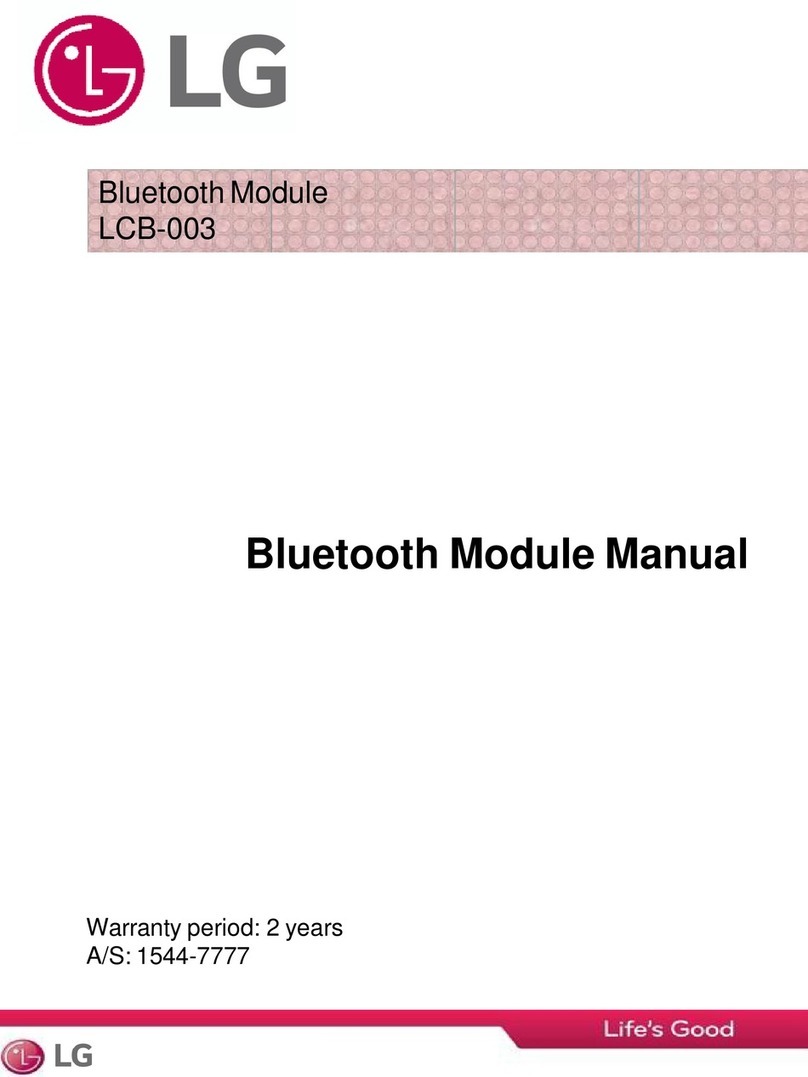
LG
LG LCB-003 manual
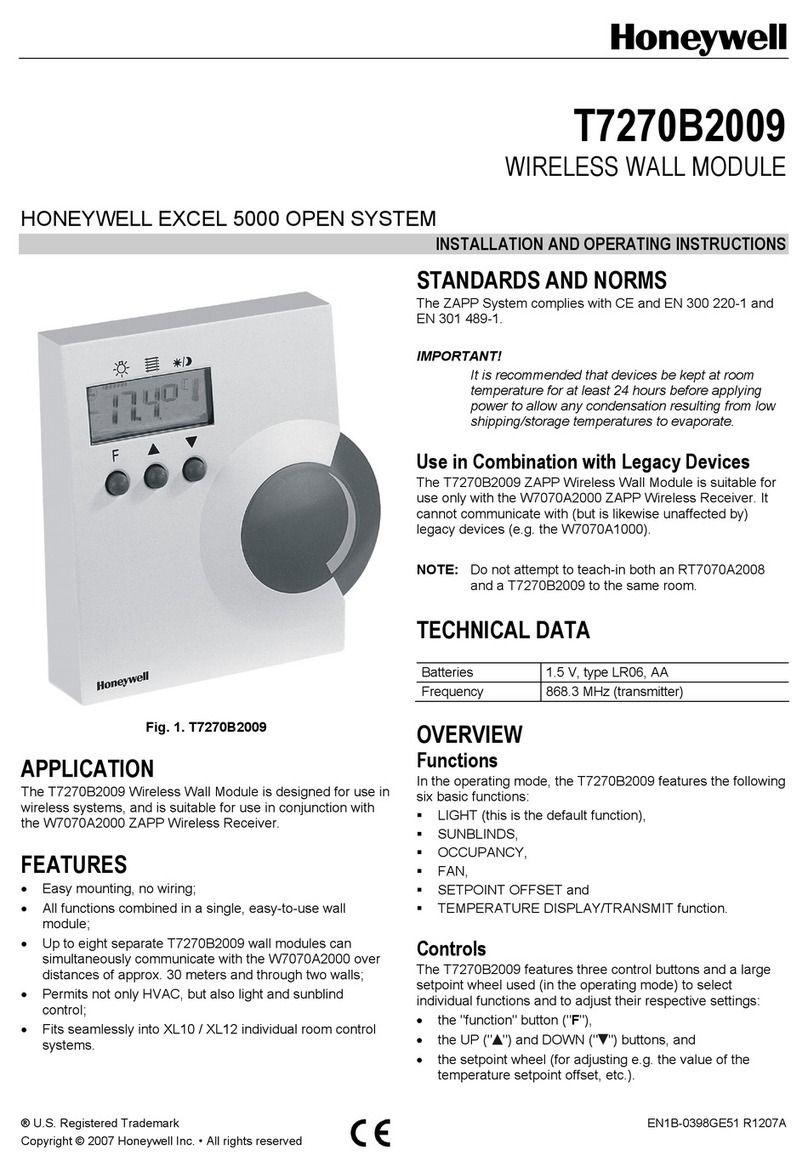
Honeywell
Honeywell T7270B2009 Installation and operating instructions
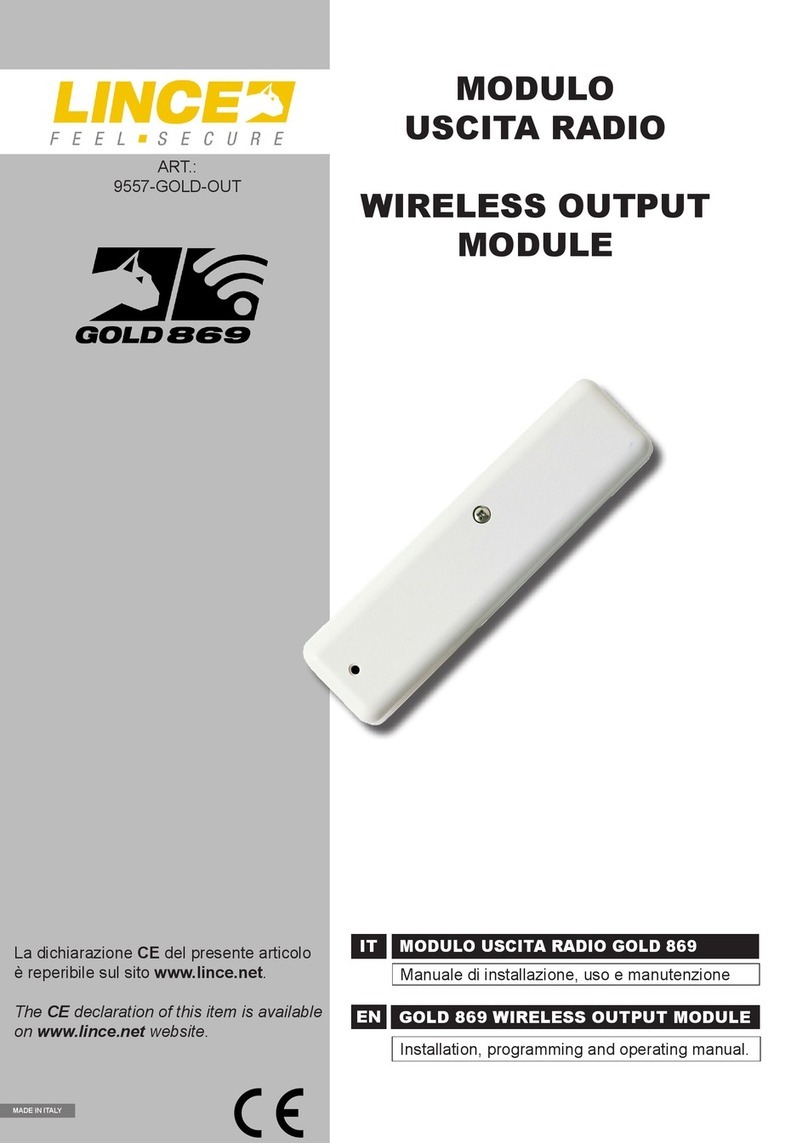
Lince
Lince GOLD 869 9557-GOLD-OUT Installation, Programming and Operating Instructions
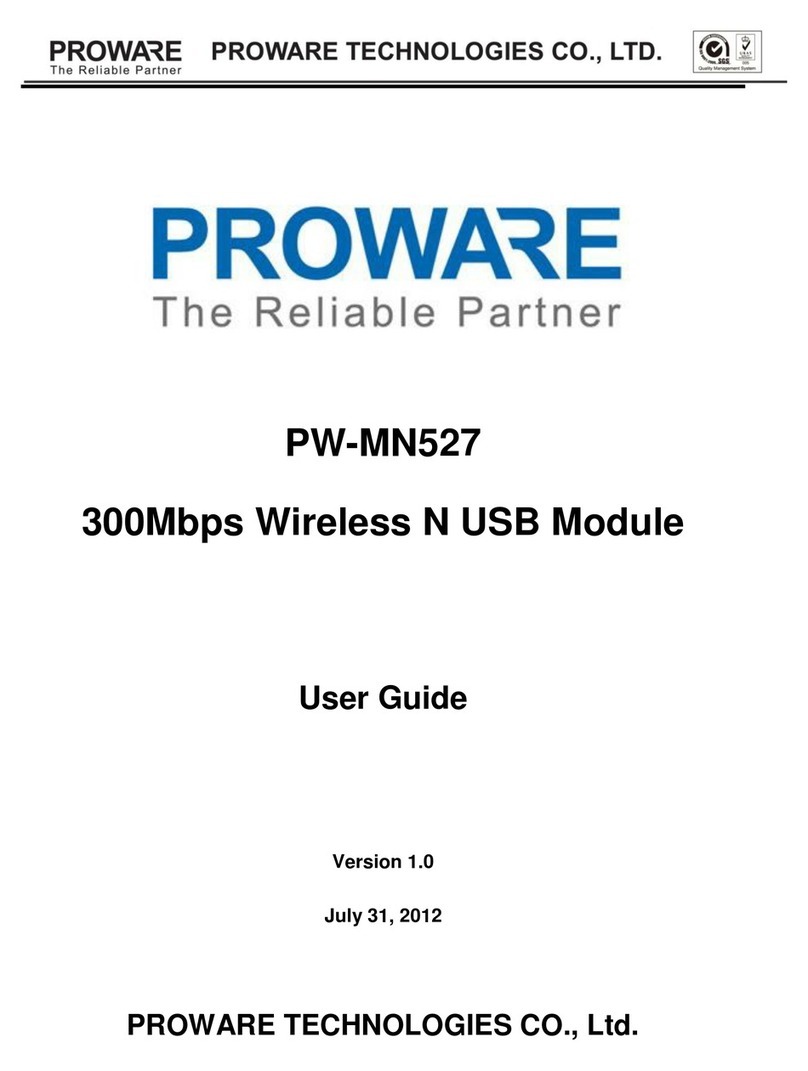
Proware
Proware PW-MN527 user guide
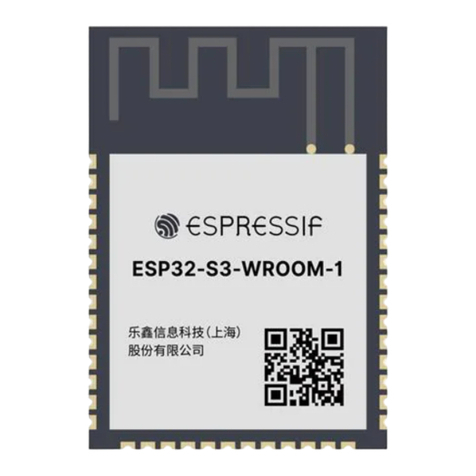
Espressif Systems
Espressif Systems ESP32-S3-WROOM-1 user manual
